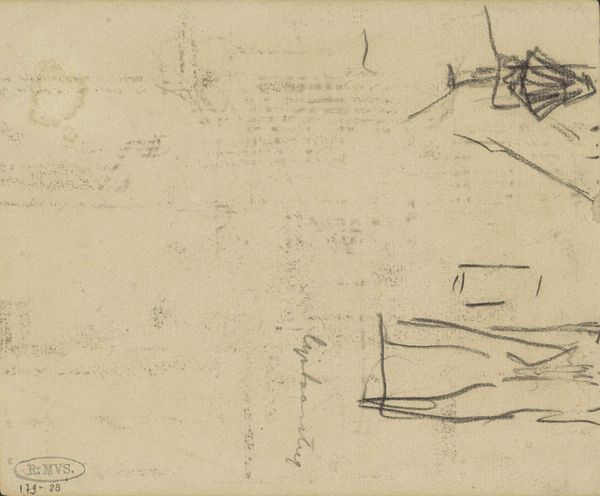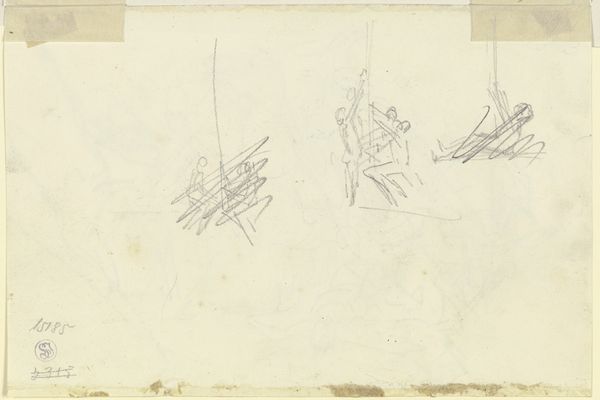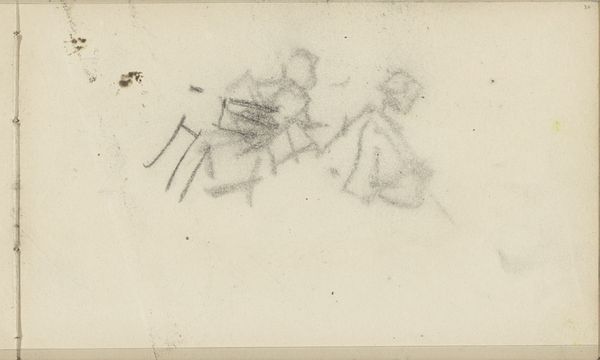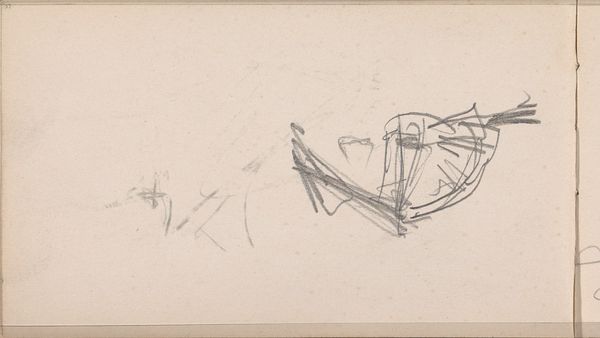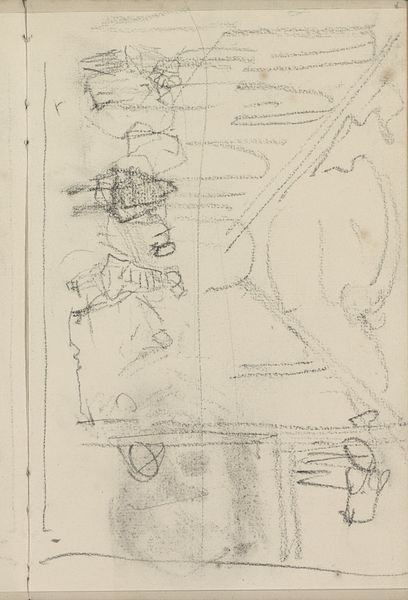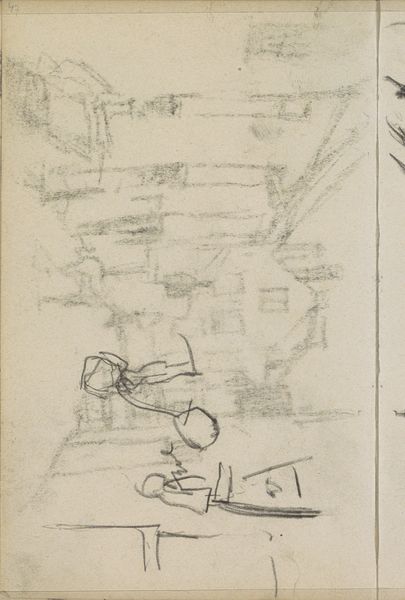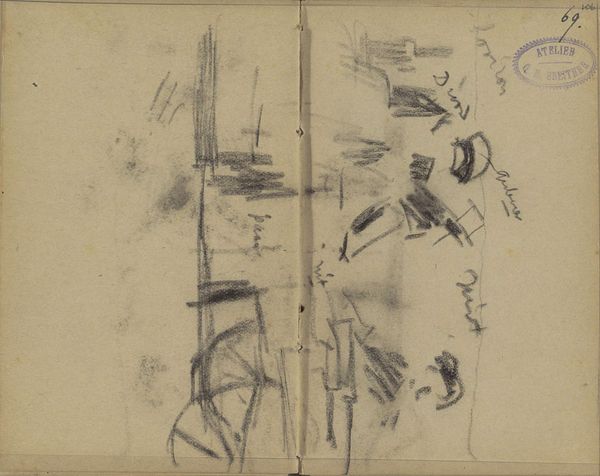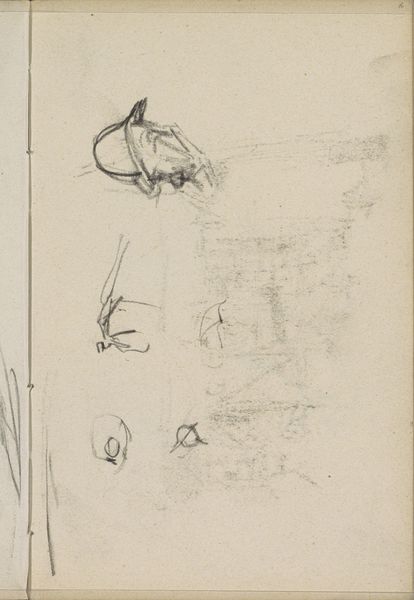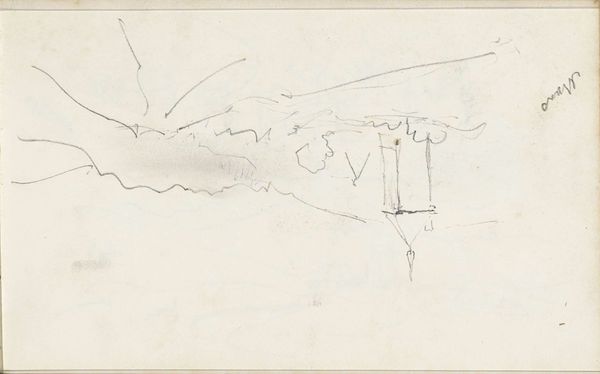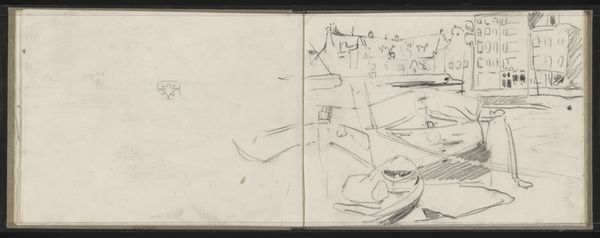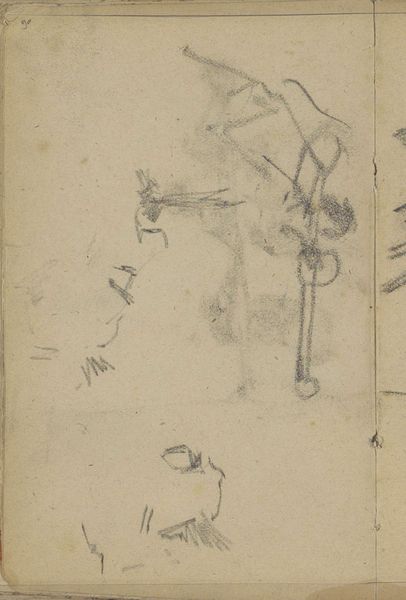
drawing, pencil
#
drawing
#
dutch-golden-age
#
impressionism
#
landscape
#
pencil
Copyright: Rijks Museum: Open Domain
Editor: Here we have George Hendrik Breitner’s "Opstelling van de rijdende artillerie," created between 1884 and 1886. It’s a pencil drawing held here at the Rijksmuseum. It’s so sparse, almost like a fleeting memory. I'm curious about the quickness of the sketch. What do you see in this piece? Curator: This drawing, while seemingly a simple sketch, offers a crucial insight into Breitner's engagement with representing modern life and military culture. The loose, impressionistic style captures the dynamism of the artillery, hinting at a world of social upheaval and evolving national identities. It challenges us to consider how military power and masculine identity were being visually constructed during this period. What kind of a relationship do you think an artist has with this display of force? Editor: I see it! It seems like more than just observation, but perhaps Breitner is commenting on or questioning something. Curator: Precisely. Consider the societal role of the military at the time, particularly regarding nation-building and colonial expansion. Breitner, working during a period of significant militarization, places these figures not on a heroic pedestal, but almost caught on the periphery, inviting questions about Dutch imperial ambitions and potential human cost. The looseness invites a reading against the grain, maybe. Do you feel any tension there? Editor: I do. Now I wonder if the sketch-like quality, that transience, perhaps it speaks to the temporary or even unstable nature of power itself. Curator: Exactly! He leaves much unsaid. By choosing not to depict a heroic or glorifying scene, Breitner opens space for the viewer to contemplate those structures. I see your thoughts evolving right here, situating this piece within discussions of Dutch history and power. Editor: That's really broadened my perspective. Thanks for the conversation!
Comments
No comments
Be the first to comment and join the conversation on the ultimate creative platform.
